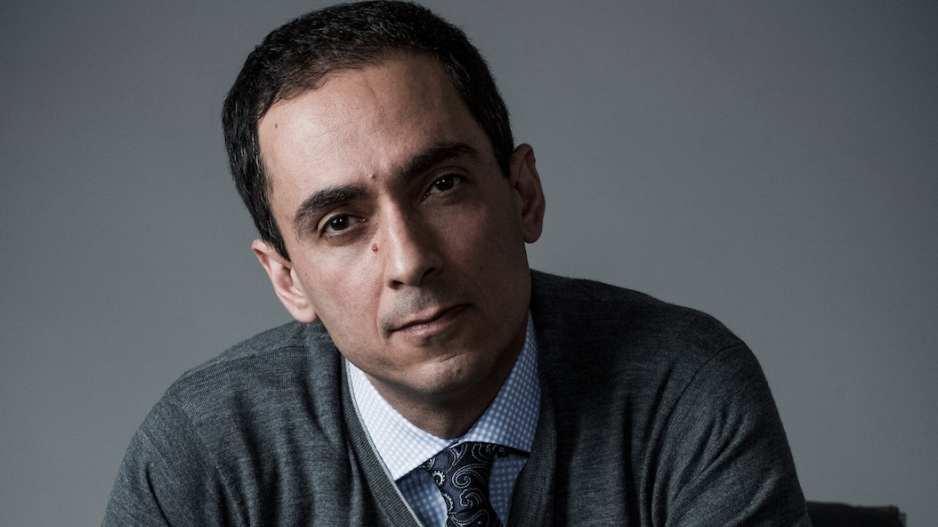One of B.C.’s brightest biotech stars started trading on the Toronto and the New York stock exchanges simultaneously on April 28, as the company raised US$58.5 million in an initial public offering (IPO).
The Zymeworks transaction is the first B.C. biotech venture-capital-backed IPO on the Toronto Stock Exchange (TSX) in more than a decade, according to Brian Bloom, CEO of Bloom Burton & Co., a health-care investment and research company.
Victoria’s Aurinia Pharmaceuticals Inc. (TSX:AUP; Nasdaq:AUPH) went public via a reverse takeover , instead of an IPO, on the TSX in 2013 and on the Nasdaq in 2014. Xenon Pharmaceuticals Inc.’s (Nasdaq:XENE) Nasdaq IPO was in 2014.
“It’s a great time for Zymeworks to go public,” LifeSciences BC chairman James Hatton told Business in Vancouver. “If I were to have picked one company that was next in line to go public, I would have picked them. There’s lots of good energy in the industry, and the market is bubbling, but not frothy.”
Zymeworks is focused on killing cancerous cells using platforms that help other drugs more accurately identify and target them.
It has four platforms that CEO Ali Tehrani compares to different engines that an auto-parts manufacturer might produce. Each engine is versatile and can be placed into multiple vehicles – perhaps a motorcycle, a golf cart or a lawn mower.
Zymeworks’ platforms have similar versatility. As a result, pharmaceutical giant Glaxo-SmithKline PLC (NYSE:GSK) has an agreement whereby it pays Zymeworks to access one of its platforms to develop drugs.
Agreements with various Big Pharma companies could yield billions of dollars in revenue for Zymeworks if they can develop marketable drugs because Zymeworks collects cheques from them while they access Zymeworks’ drug delivery platforms.
Zymeworks also develops its own drugs using its platforms.
One platform, Azymetric, “turbocharges” antibodies in the human immune system and enables them to target cells that need to be killed instead of what Tehrani said normally happens: a blind killing spree of healthy and cancerous cells.
Surgery is usually the first treatment for people diagnosed with cancer. Chemotherapy and radiation are then used to kill cells indiscriminately in the hope that the body will hit a reset button and recover following the cell massacre.
Targeted therapy is an alternative cancer treatment.
Zymeworks’ aim is to improve targeted therapy’s accuracy so that it can be used before, or instead of, chemotherapy and radiation, which have severe side effects, including hair loss.
Zymeworks has thus far secured nearly US$150 million from investors. Its biggest financing (US$61.5 million) closed last year.
BDC Capital and Vancouver’s Lumira Capital led the financing round and were joined by Eli Lilly and Co. (NYSE:LLY), Celgene (Nasdaq:CELG), CTI Life Sciences Fund, Fonds de solidarité FTQ, Perceptive Advisors, Teralys Capital, Northleaf Venture Catalyst Fund, Brace Pharma Capital and Merlin Nexus.
News of Zymeworks’ plans is sweet for Mike Volker and other early investors.
He remembers having Tehrani come to Volker’s Vantec Angel Network in January 2006 to pitch angel investors on the merits of Zymeworks as an investment.
Volker had already invested about $100,000 in Zymeworks in May 2005 through his WUTIF Capital (VCC) Inc. angel fund, which invests solely in start-ups. Its average investment is approximately $100,000 per company.
“We invested a little bit in 2005 and then a bit more in 2006,” Volker said. “We have 70 investments in the fund, so it was not significant going in, but it will be coming out.”
Volker recalls being impressed that Zymeworks’ early technology came out of research done at the University of British Columbia (UBC).
“I’m a fan of university intellectual property because, usually, it’s pretty good. It’s a good starting point, and then all you need is a management team.”
Although Tehrani did not initially have much business experience, Volker said he was impressed with Tehrani because he appeared to be a quick study and had been mentored by local entrepreneurship guru and former UBC professor Haig Farris, who taught an entrepreneurship course and was Zymeworks’ first investor when he cut a $4,000 cheque for the company in 2003.
Farris followed that up, along with a few other early investors, to invest a combined $140,000 within the year.
Farris has had success with other early investments in companies such as D-Wave Systems, Bycast Media Systems and Tech-X.
“I made a little promise to myself that I would make sure I financed any of my promising students,” Farris said. •




